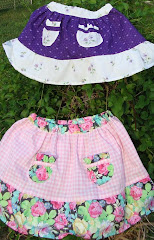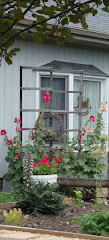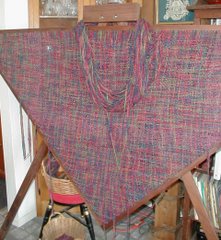I know, this is not a problem that confronts you today. Today is St. Patrick's Day and all across America many cooks have prepared corned beef for dinner. With cabbage, potatoes, carrots or whatever accompanies the corned beef, folks are pretty much satisfied. Dinner was good. It's tomorrow or maybe the day after, when you're looking at the remains of that corned beef still sitting in the fridge that I'm talking about.
There are a couple of old standbys for using up corned beef. How about corned beef sandwiches, perhaps on rye with mustard? Maybe a pickle on the side or try adding sauerkraut, a mild cheese and thousand island dressing and grilling it for a minute or two if you want to make it a little more special. And there's always corned beef hash either plain or red flannel (with beets AND potatoes). I know some people who only tolerate the initial meal of corned beef and cabbage because they know that within a day or two it will be time for hash, with or without eggs.
Believe it or not, corned beef can even make a decent pate with which to stuff a baguette. Or, if you don't care about presentation and want to eat it now instead of waiting several hours while it chills, mix minced corned beef with mayonnaise, pickle relish and the veriest bit of mustard. Spread it on your favorite cracker or make a sandwich.
A successful potluck casserole I've made on more than one occasion is Lazy Day Reuben Casserole. It's one of those layered meat, noodles, veg and sauce combos that use condensed cream of ____ soup or, my preference, a homemade alternative. Another favorite is a sandwich braid, Reuben Loaf, made by layering corned beef, cheese and sauerkraut on bread dough before baking.
There are many other ways to incorporate leftover corned beef into meals. Include a cup or so of diced corned beef in macaroni and cheese or scalloped potatoes. And if making scalloped potatoes, a layer of sliced cabbage and a 1/2 teaspoon or so of Dijon mustard mixed into the cream sauce adds to the mix. Use diced corned beef as a filling for pasties, crescent roll turnovers or empanadas. Whatever you call them, the corned beef can sub for the meat in your basic recipe. To make it individual to corned beef, I like to brush a light coating of mustard on the inside of the dough before sealing.
And there are more ideas all over -- I've read recipes for corned beef-potato pizza, a suggestion for using the reuben sandwich ingredients to create a baked potato topping, Emeril Lagasse's Cabbage-Potato Soup and Taste of Home's Reuben Soup each call for corned beef in small enough amounts to qualify as a way to use up leftovers. Just don't waste something that only today (yesterday?) you were enjoying so much.
Corned Beef Hash
4 tablespoons butter, divided
1 tablespoon oil
1/2 medium onion, finely chopped
1/2 medium green pepper, chopped - optional
1-1/2 to 2 cups cold cooked corned beef, free of all fat and gristle and finely chopped
2 to 3 cups cold cooked potatoes, coarsely chopped
5 tablespoons beef, chicken or vegetable stock
salt and pepper, to taste
2 tablespoons Worcestershire sauce
2 tablespoons fresh parsley, finely chopped - optional
Cook onions and green peppers in 2 tablespoons over medium heat in a 10-inch heavy skillet for about 5 minutes or until they soften without browning. Scrape them into a large mixing bowl. Add corned beef, potatoes, stock, salt and pepper, and Worcestershire sauce to bowl. Mix gently to combine. Let hash rest for a few minutes in bowl so liquid can be absorbed.
To cook hash, heat 2 tablespoons butter and 1 tablespoon oil in 10-inch skillet. When the fat is hot but not sizzling, add hash, patting it down in the pan gently with a large spatula. Cook over moderate heat about 40 minutes, shaking pan every now and then to make sure hash isn't sticking to bottom. As it cooks, the hash will inevitably produce some fat; tip the pan and skim it from the sides with a small spoon, or better still, with a bulb baster. During the last 10 minutes of cooking, to remove any extra fat, lay a double thickness of paper toweling on top like a blotter, pressing it down on the hash. Repeat this blotting procedure as often as you think necessary, being careful not to get paper toweling near flame.
To serve, turn the hash out onto large round platter. It's best to do this by holding the platter over the skillet and up-ending the skillet to turn the hash out. If part of the crust sticks to the pan, remove it and patch it into place. Sprinkle the top with parsley and serve alone or with condiments such as mustard, pickles, horseradish, and the like.
Red Flannel Hash
1/4 pound salt pork or thick bacon, finely diced
1/2 medium onion, finely chopped
1/2 medium green pepper, finely chopped
1-1/2 to 2 cups cooked corned beef, free of all fat or gristle, and finely chopped
1-1/2 cups cooked or canned beets, diced
4 tablespoons fresh parsley, finely chopped, divided
1-1/2 to 2 cups cold cooked potatoes, coarsely chopped
6 tablespoons heavy cream or evaporated milk
salt and pepper, to taste
Render the pork by frying it in a 10-inch heavy skillet over moderate heat. Stir almost constantly wtih a wooden spoon until the fat has dissolved, then remove the brown bits and put them aside. Pour half the fat into a dish and save it until later.
Heat remaining fat in skillet and over moderate heat, cook onions and peppers for about 5 minutes or until they soften without browning. Scrape them into a large mixing bowl. Add corned beef, beets, potatoes, 2 tablespoons parsley, salt and pepper to bowl. Moisten mixture with cream. Mix gently to combine. If you want you could add the brown pork bits left from rendering the fat. Let hash rest for a few minutes in bowl so liquid can be absorbed.
To cook hash, add remaining reserved pork fat to 10-inch skillet. When the fat is hot but not sizzling, add hash, patting it down in the pan gently with a large spatula. Cook over moderate heat about 40 minutes, shaking pan every now and then to make sure hash isn't sticking to bottom. As it cooks, the hash will inevitably produce some fat; tip the pan and skim it from the sides with a small spoon, or better still, with a bulb baster. During the last 10 minutes of cooking, to remove any extra fat, lay a double thickness of paper toweling on top like a blotter, pressing it down on the hash. Repeat this blotting procedure as often as you think necessary, being careful not to get paper toweling near flame.
To serve, turn the hash out onto large round platter. It's best to do this by holding the platter over the skillet and up-ending the skillet to turn the hash out. If part of the crust sticks to the pan, remove it and patch it into place. Sprinkle the top with parsley and serve alone or with condiments such as mustard, pickles, horseradish, and the like.
Of course, if you wish, you can omit rendering fat from the pork called for and substitute butter and/or oil as in regular hash recipe just above.
Pate of Corned Beef
1/4 pound butter, creamed
2 cups cooked corned beef, ground -- twice, if possible
1 tablespoon onion, grated
3 tablespoons heavy cream or evaporated milk
2 teaspoons prepared mustard
1 teaspoon dry mustard
1 teaspoon lemon juice
2 tablespoons fresh parsley, finely chopped
2 tablespoons chives, finely chopped
1/4 teaspoon salt
1/4 teaspoon black pepper
2 teaspoons Worcestershire sauce
loaf of French or Italian bread, about 12" long and 3-1/2" in diameter
Cream the butter in a mixing bowl by beating it with a large spoon for a few minutes until it is smooth. Then, a few tablespoons at a time, beat in the corned beef and, one after the other, the onions, cream, mustards, lemon juice, parsley, chives, salt and pepper, and Worcestershire sauce. You could use an electric mixer wtih a whisk beater or use a food processor or beat the pate by hand until it is as smooth as you can possibly get it. Just be careful not to overmix it if using the processor. Taste for seasoning, remembering that when the pate is chilled, its flavor will be considerably muted.
Slice 2 inches or so off the ends of the bread, save for another use. With your fingers and the aid of a long thin spoon, remove as much of the soft insides of the bread as possible without damaging or breaking through the crust. When the bread is a hollow tube, stand it on one end on a sheet of waxed paper and carefully fill it with the soft pate, packing it down as you proceed. If there isn't enough pate to fill the bread, simply cut off the hollow portion.
Wrap filled bread in waxed paper and refrigerate for a few hours or until the pate is firm. Slice into 1/8- or 1/4-inch rounds with a serrated knife and serve. You may briefly heat the bread in a hot oven to crisp the crust but do this with caution as the pate will soften too much to slice if the loaf becomes too hot.
Source: Michael Field's Culinary Classics and Improvisations (1967)
Reuben Loaf
1 batch bread dough *see note
1/4 cup thousand island salad dressing or a grainy mustard, whichever you prefer
1 to 2 cups cooked corned beef brisket, diced
4 ounces Swiss cheese or mild cheese of your choice, shredded or thinly sliced
1 cup sauerkraut, rinsed and drained
1 egg white, beaten - optional
Preheat oven to 400F.
Turn dough out onto a lightly greased (15x10-inches) baking sheet. Roll dough to a rectangle that almost fills the pan.
Spread dressing down center third of dough. Sprinkle area spread with dressing with layers of beef, cheese and sauerkraut.
Make cuts from filling to edges of dough 1 inch apart on both sides of the filling. Alternating sides, fold the strips at an angle across filling. Brush dough with egg white.
Bake for 25-30 minutes or until lightly browned. Serve immediately; refrigerate leftovers.
Yield: 6 to 8 servings.
Source: Country Woman
*Note - Use your favorite plain bread dough. Can be made by hand, in the bread machine on dough setting or use a loaf of thawed frozen dough. If making yourself, a recipe which uses 3 to 4 cups flour or will yield a 1.5-pound loaf would be about right.
Lazy Day Reuben Casserole
2 cans condensed cream of chicken soup, **see note
1-1/3 cups milk or thinned yogurt
1/2 cup onion, chopped
3 tablespoons mustard
2 pounds sauerkraut, drained (and rinsed if too salty)
8 ounces egg noodles
12 ounces corned beef brisket, diced
2 cups Swiss cheese, shredded
3/4 cup rye bread crumbs, toasted
2 tablespoons margarine, melted
In bowl, mix soup, milk, onion and mustard until blended.
In greased 13"x9"x2" baking dish, spread drained sauerkraut; top with uncooked noodles. Spoon soup mixture evenly over noodles. Sprinkle with crumbled corned beef, then cheese.
In bowl, stir together rye bread crumbs and melted butter until well blended; sprinkle over top of cheese. Cover tightly with foil.
Bake in 350°F oven for 60 minutes or until noodles are tender.
I've had this recipe so long I don't know exactly where it came from but I think it was in an old Progressive Farmer from the '70s.
**Note -- I use a homemade version of cream soup most of the time. Here's one recipe that will make several "cans" worth as you need it.
Homemade Cream Soup Substitute
2 cups instant non fat dry milk
3/4 cup cornstarch
1/4 cup chicken bouillon, instant or other preferred bouillon flavor
2 teaspoons dried onion flakes
1 teaspoon each basil and thyme - optional
2 teaspoons pepper
Combine dry milk, cornstarch, bouillon, onion flakes, basil, thyme and pepper.
To make the equivalent of one can of condensed soup, use 1/3 cup of the mix and 1-1/2 cups water and cook over moderate heat until thickened.
NOTE: Beef or vegetable bouillon may be used in place of the chicken. Mushrooms may be added to the sauce for a mushroom soup base. I like to cook a little celery in butter and add to prepared recipe when it calls for celery soup.
For more kitchen aids check out Kitchen Tip Tuesday at Tammy's Recipes.
Tuesday, March 17, 2009
Subscribe to:
Post Comments (Atom)













2 comments:
Oh, yum! Rueben loaf and Reuben casserole...I think I need to buy some more corned beef! Thank you!
LOL, yes! The mark of a good leftover recipe -- when you WANT to end up leftovers. ;-)
Thanks for the note!
Post a Comment